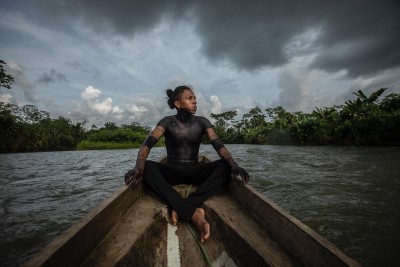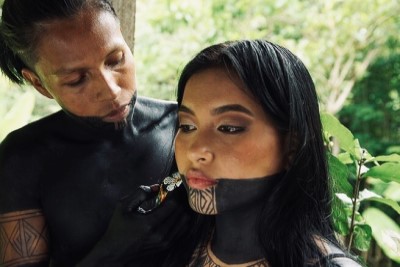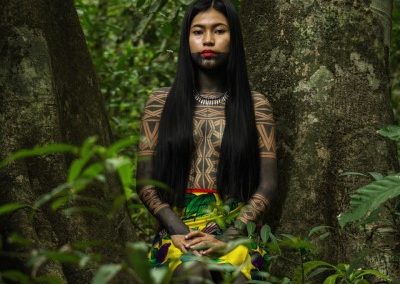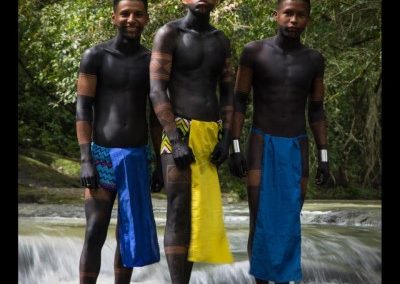Interview with Elio Cunampio, body painter and photographer from the Emberá indigenous community
Elio Cunanpio is preparing a book on the art of Emberá body painting from Panama, which is due to appear in the first quarter of 2024. We’ll keep you informed of its publication.
Visit Latin America: Hello Elio, could you tell us about the origins of your book on traditional Emberá paintings?
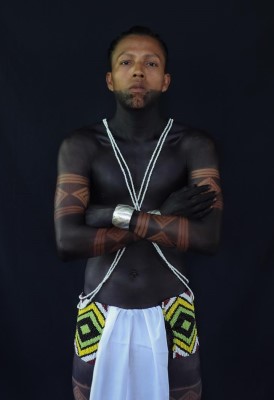 Elio Cunampio: The idea for the book came from my childhood in a generation where discrimination was a subject avoided by our parents. They had suffered discrimination because of their dress, language and customs. This experience led them not to teach us these aspects of our culture in order to keep us away from them. It’s sad because my generation grew up with a lack of knowledge about some of our traditions. Later on, I started to take an interest and do some research. I started by tattooing non-traditional designs before realising the beauty and importance of our Emberá heritage. I then chose to devote myself solely to traditional paintings. I noticed that there was a total lack of written documentation on our culture and I decided to create this book in digital form as well – nowadays everything is digital – so that future generations wouldn’t have the same difficulty in learning and that this knowledge wouldn’t be lost.
Elio Cunampio: The idea for the book came from my childhood in a generation where discrimination was a subject avoided by our parents. They had suffered discrimination because of their dress, language and customs. This experience led them not to teach us these aspects of our culture in order to keep us away from them. It’s sad because my generation grew up with a lack of knowledge about some of our traditions. Later on, I started to take an interest and do some research. I started by tattooing non-traditional designs before realising the beauty and importance of our Emberá heritage. I then chose to devote myself solely to traditional paintings. I noticed that there was a total lack of written documentation on our culture and I decided to create this book in digital form as well – nowadays everything is digital – so that future generations wouldn’t have the same difficulty in learning and that this knowledge wouldn’t be lost.
VLA: Can you tell us about the ways in which you have deepened your knowledge of body painting, particularly through your research process?
I learnt from conversations with older members of my community, including my family. Finding information independently has often proved difficult due to the lack of reliable sources. Indeed, in our culture, knowledge is mainly passed on orally and through practice, rather than through written documents. These exchanges with experienced and well-informed people proved crucial to understanding our traditions and practices in depth.
VLA: How popular is body painting in the Embera community today?
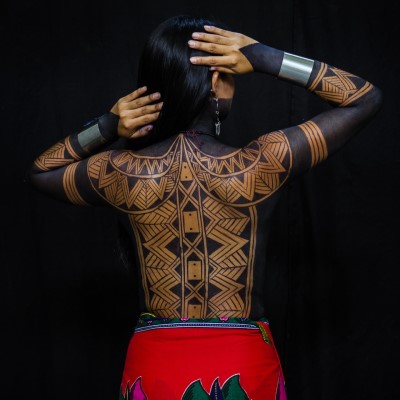 Body painting wasn’t really practised any more when I started my research. However, thanks to initiatives like those of Mara (Mara Barrington is an Emberá artist) and other young people, it is now gaining in popularity. With the help of social networks and photography, we’ve managed to get more young Emberá interested in this art form. This strategy has also attracted the attention of people outside the community. It’s essential that we continue to document and pass on this knowledge, so that perhaps one day it can be taught in our schools.
Body painting wasn’t really practised any more when I started my research. However, thanks to initiatives like those of Mara (Mara Barrington is an Emberá artist) and other young people, it is now gaining in popularity. With the help of social networks and photography, we’ve managed to get more young Emberá interested in this art form. This strategy has also attracted the attention of people outside the community. It’s essential that we continue to document and pass on this knowledge, so that perhaps one day it can be taught in our schools.
VLA: What is the significance behind the Emberá body paint designs?
The drawings are closely linked to the spirits and the shaman, who is the mediator between the spirits and the community. He guides rituals and practices, receiving instructions from the spirits. Even activities such as farming and building houses or boats are influenced by his advice, often based on the phases of the moon.
VLA: The paintings are done with “Jagua”, can you explain what it is and how it is used?
The jagua is a fruit with which we make ink, by removing the skin, grating it and pressing it. This is how we obtain the liquid, which is used in a variety of ways. Women use it for their hair and to clean their skin. In the past, when a baby was born, for example, a week later its mother would paint it black in order to clean it completely.
VLA: Under what circumstances is body painting used in the Emberá concept?
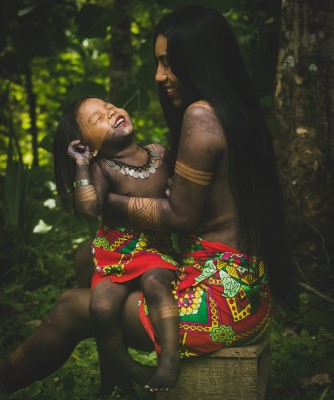 Painting and drawing have ritual origins, linked to various events such as healing, initiation and puberty rituals, as well as festivals and mourning. It symbolises the balance between the spiritual and the earthly, and reincarnation in different spiritual planes. Our motifs, often linked to snakes, illustrate this belief.
Painting and drawing have ritual origins, linked to various events such as healing, initiation and puberty rituals, as well as festivals and mourning. It symbolises the balance between the spiritual and the earthly, and reincarnation in different spiritual planes. Our motifs, often linked to snakes, illustrate this belief.
VLA: How do body painting motifs reflect social status within the Emberá community?
The patterns reflect social status, such as being single or married. For young people, patterns are simple, but become more complex at puberty. Patterns vary according to gender and marital status, and there are even special patterns for chefs.
VLA: Can you tell us about initiation rituals and their importance in Emberá culture?
There are many such rituals. To give you two examples, one of the initiation rituals consisted of painting the newborn boy with the dust of an animal chosen for its qualities, which the father would hunt. If the child was to be fast, the father would hunt a deer, and the powder from the animal’s bone would serve as the basis for the ritual painting, which would then pass on its qualities to the child. For girls, the process begins with the first menstruation and includes specific teachings for girls: her head is shaved and when her hair has grown back to her waist, she is given fringes. The ritual ends with a ceremony where she receives her first bachelor’s badge, which is very specific and will never be used again.
You can follow Elio on his social networks: Instagram and Facebook
RECENT POSTS
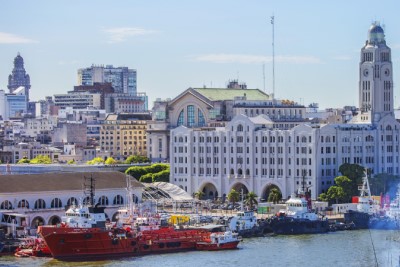
Montevideo, New Headquarters of the Tourism Law Observatory for Latin America and the Caribbean
LATAM NEWS Montevideo, New Headquarters of the Tourism Law Observatory for Latin America and the CaribbeanMontevideo, the capital of Uruguay, has been designated as the headquarters of the Tourism Law Observatory for Latin America and the Caribbean, an initiative...
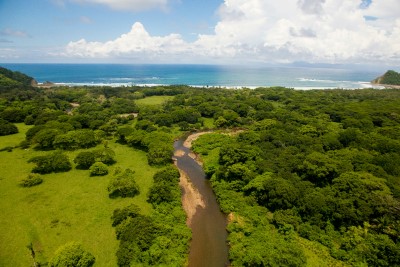
Guanacaste: An Escape to the Heart of Costa Rican Biodiversity
DESTINATIONS Guanacaste: An Escape to the Heart of Costa Rican Biodiversity Situated in the north-west of Costa Rica, the province of Guanacaste is a natural paradise that captivates visitors with its ecological diversity, heavenly beaches and deep-rooted cultural...
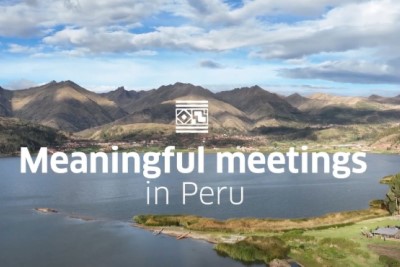
“Meaningful Meetings in Peru 2024”: A New Era for Meeting Tourism
LATAM NEWS “Meaningful Meetings in Peru 2024”: A New Era for Meeting Tourism Peru's Export and Tourism Promotion Agency (PROMPERÚ) recently launched its ‘Meaningful Meetings in Peru 2024’ campaign. This initiative aims to position Peru as a destination of...



